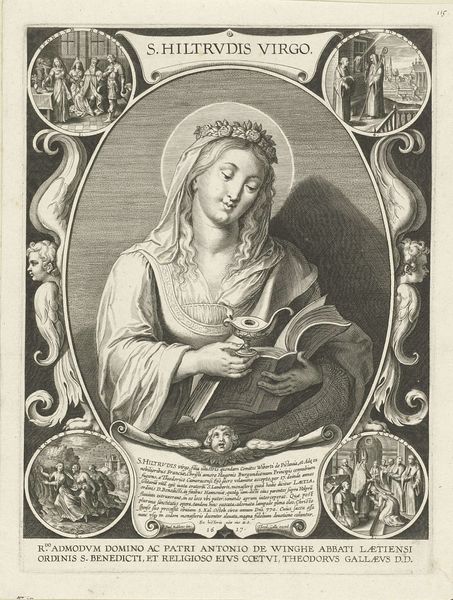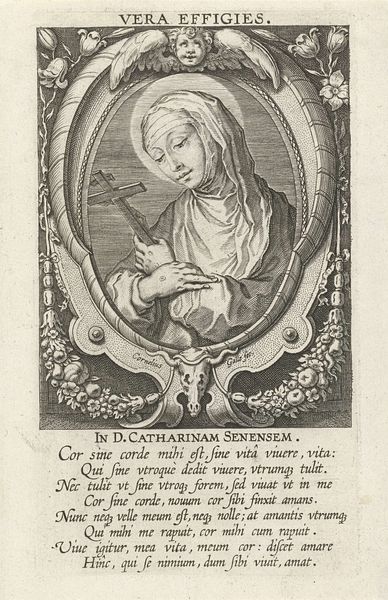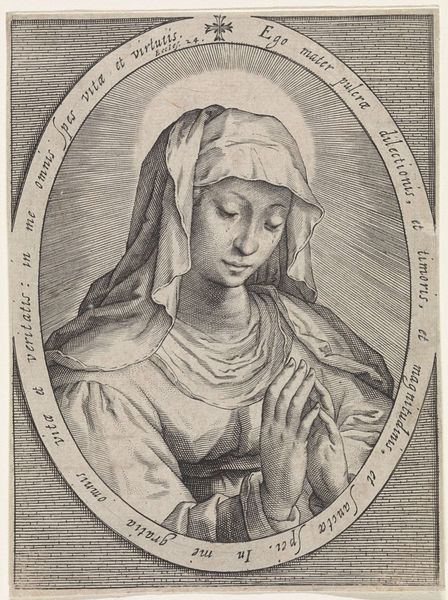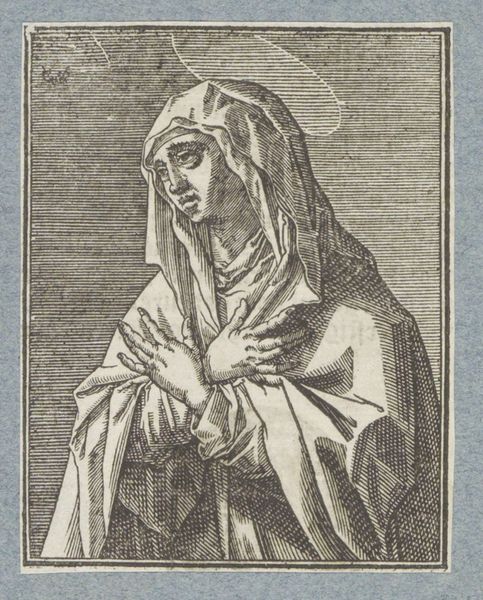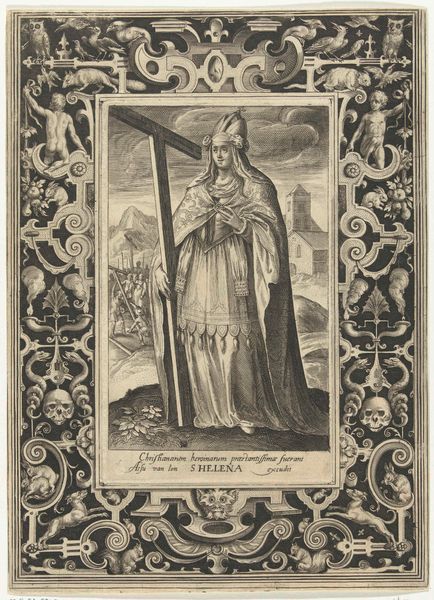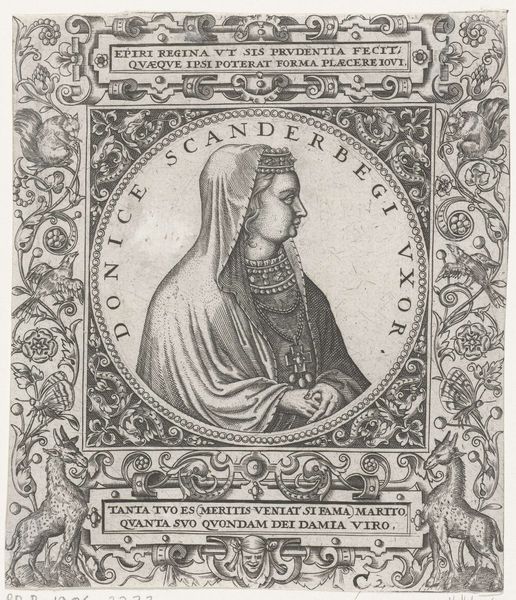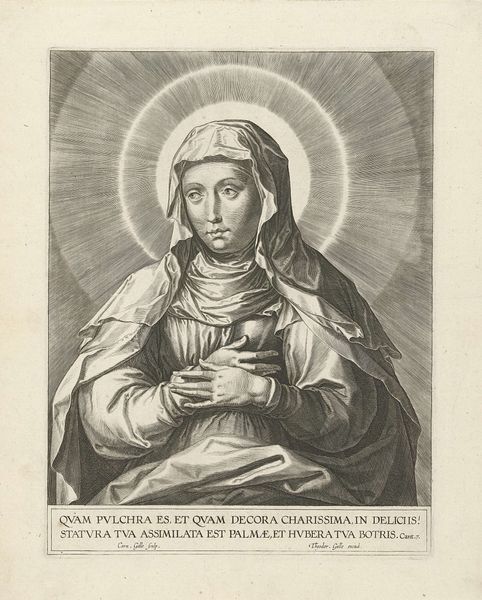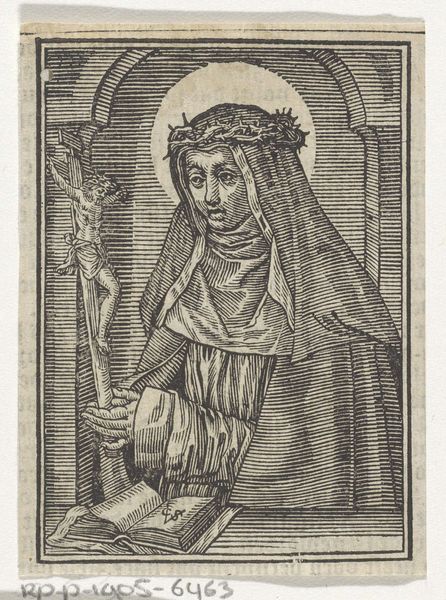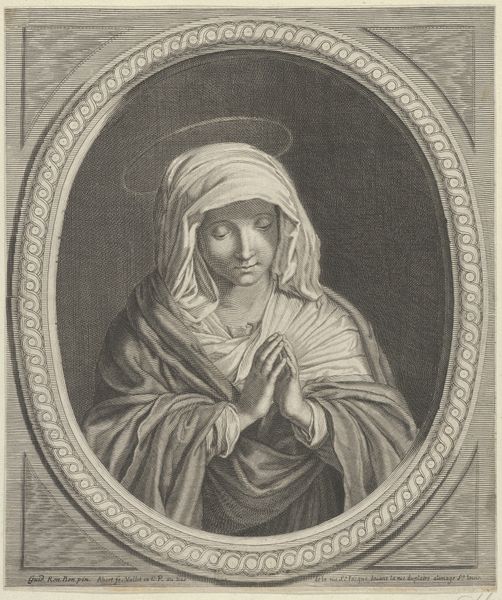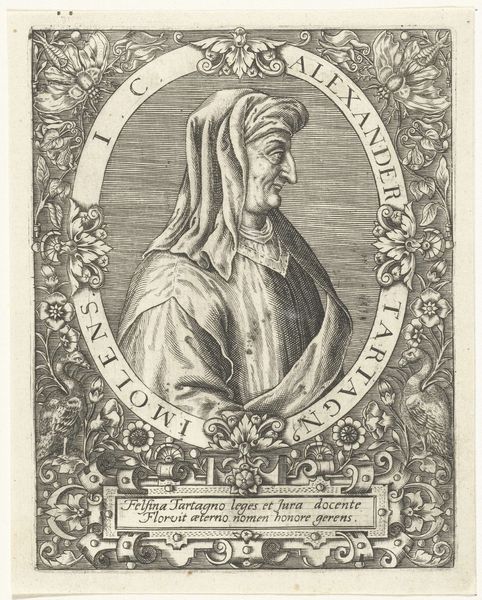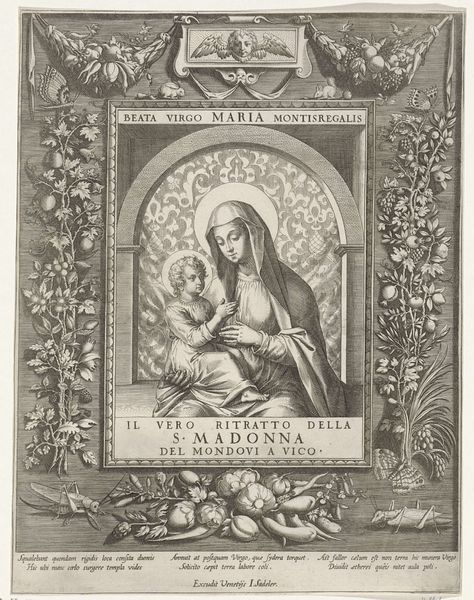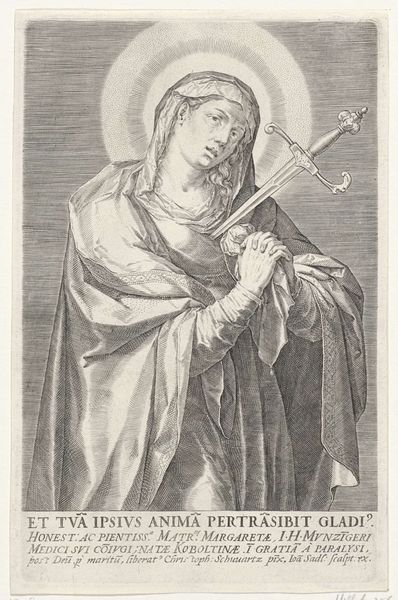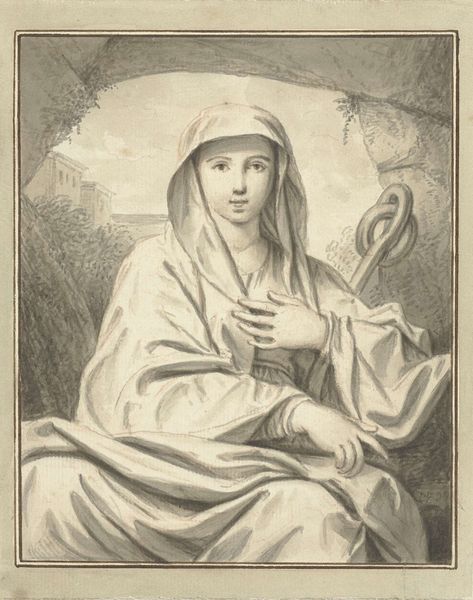
Dimensions: height 125 mm, width 80 mm
Copyright: Rijks Museum: Open Domain
Editor: Here we have a print of H. Catharina van Siena, dating back to sometime between 1595 and 1633, currently held at the Rijksmuseum. It's attributed to Wierix, done with engraving, and has such a solemn and reverent quality. What strikes you when you look at it? Curator: The visual language of this piece is profoundly steeped in the symbolic traditions of the Church. Do you see the crown of thorns, the stigmata? They are potent signifiers of suffering and identification with Christ. Wierix invites us to consider how Catherine embodies a continuity of faith through visual metaphor. Editor: So, it's not just a portrait; it's about her connection to religious symbolism. Curator: Precisely. Notice also the dove, representing the Holy Spirit, placed above her head. What emotional effect do you think these repeated symbols created for viewers? How would they reinforce certain spiritual understandings? Editor: It creates an immediate, powerful visual connection between Catherine, the Holy Spirit, and Christ’s sacrifice, emphasizing her holiness. Curator: Yes! This is Northern Renaissance symbolism functioning at its most articulate: using well-established images to evoke centuries of doctrine. How does that help us understand the cultural memory at play here? Editor: It feels like this piece works to insert her into an ongoing visual tradition, reaffirming established religious ideas, instead of forging a totally new visual path. Curator: Indeed. The imagery anchors her, and us, in a long stream of religious thought, connecting the personal to the universal. I see in her humility and direct, open gaze, she becomes a part of the story for all who look at the engraving. Editor: That really deepens my appreciation – seeing how the symbols function as links in a cultural and historical chain. Thanks for shedding light on it!
Comments
No comments
Be the first to comment and join the conversation on the ultimate creative platform.
